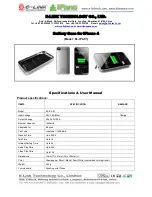
Section 12: Health and Safety Information
177
Emergency Calls
Sect
ion 12
(fuel storage and distribution areas), chemical plants or
where blasting operations are in progress.
Areas with a potentially explosive atmosphere are often
but not always clearly marked. They include below deck
on boats, chemical transfer or storage facilities, vehicles
using liquefied petroleum gas (such as propane or
butane), areas where the air contains chemicals or
particles, such as grain, dust or metal powders, and any
other area where you would normally be advised to turn
off your vehicle engine.
Emergency Calls
This phone, like any wireless phone, operates using radio
signals, wireless and landline networks as well as user-
programmed functions, which cannot guarantee
connection in all conditions. Therefore, you should never
rely solely on any wireless phone for essential
communications (medical emergencies, for example).
Remember, to make or receive any calls the phone must be
switched on and in a service area with adequate signal
strength. Emergency calls may not be possible on all
wireless phone networks or when certain network
services and/or phone features are in use. Check with
local service providers.
To make an emergency call:
1.
If the phone is not on, switch it on.
2.
Key in the emergency number for your present location
(for example, 911 or other official emergency number).
Emergency numbers vary by location.
3.
Press Emergency number.
Summary of Contents for A970 - SCH Cell Phone
Page 4: ...DAMAGES OR LOSS OF ANTICIPATED PROFITS OR BENEFITS ...
Page 50: ...50 Section 3 ...
Page 58: ...Section 4 58 ...
Page 64: ...64 Section 5 ...
Page 78: ...78 Section 6 ...
Page 122: ...Section 8 122 ...
Page 140: ...140 Section 9 ...
Page 152: ...152 Section 10 ...
Page 158: ...158 Section 11 ...
Page 192: ...192 Section 13 ...
















































